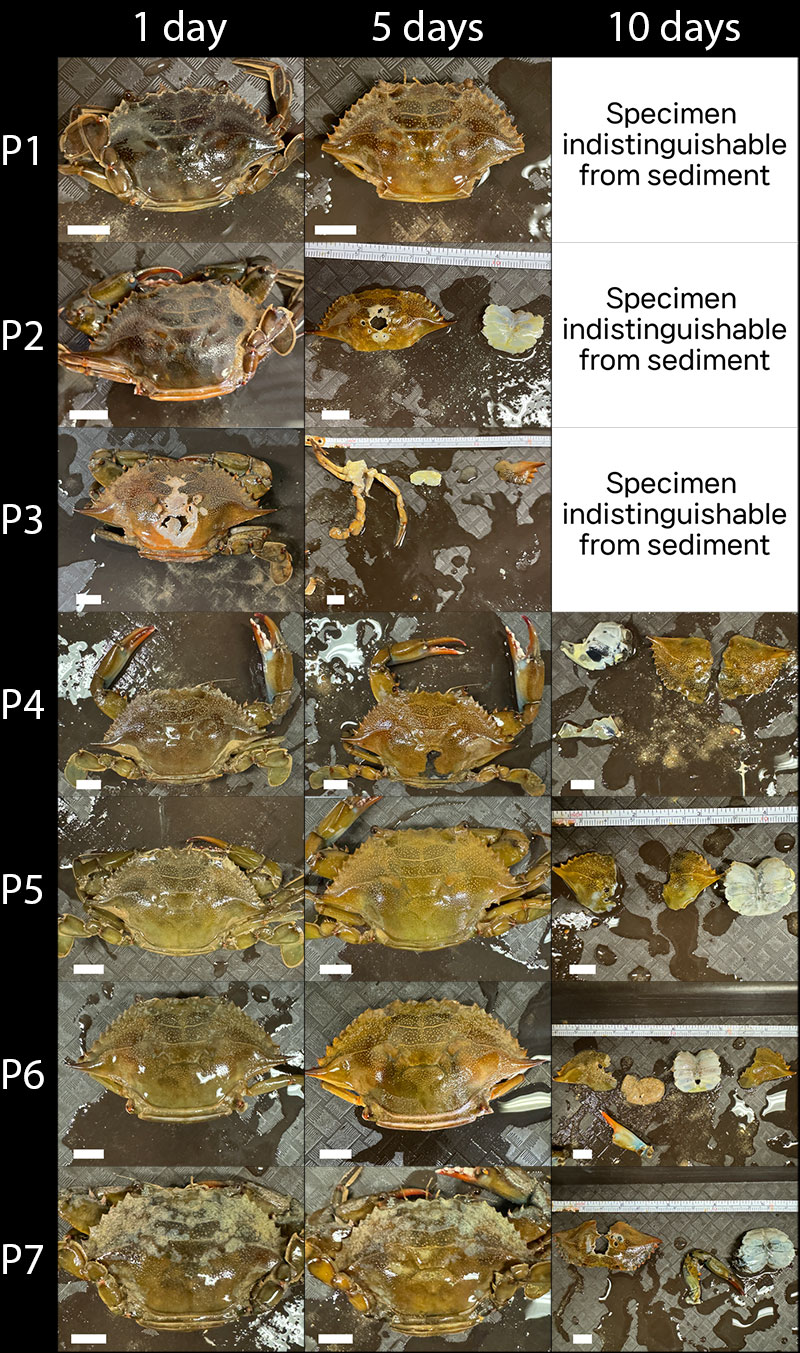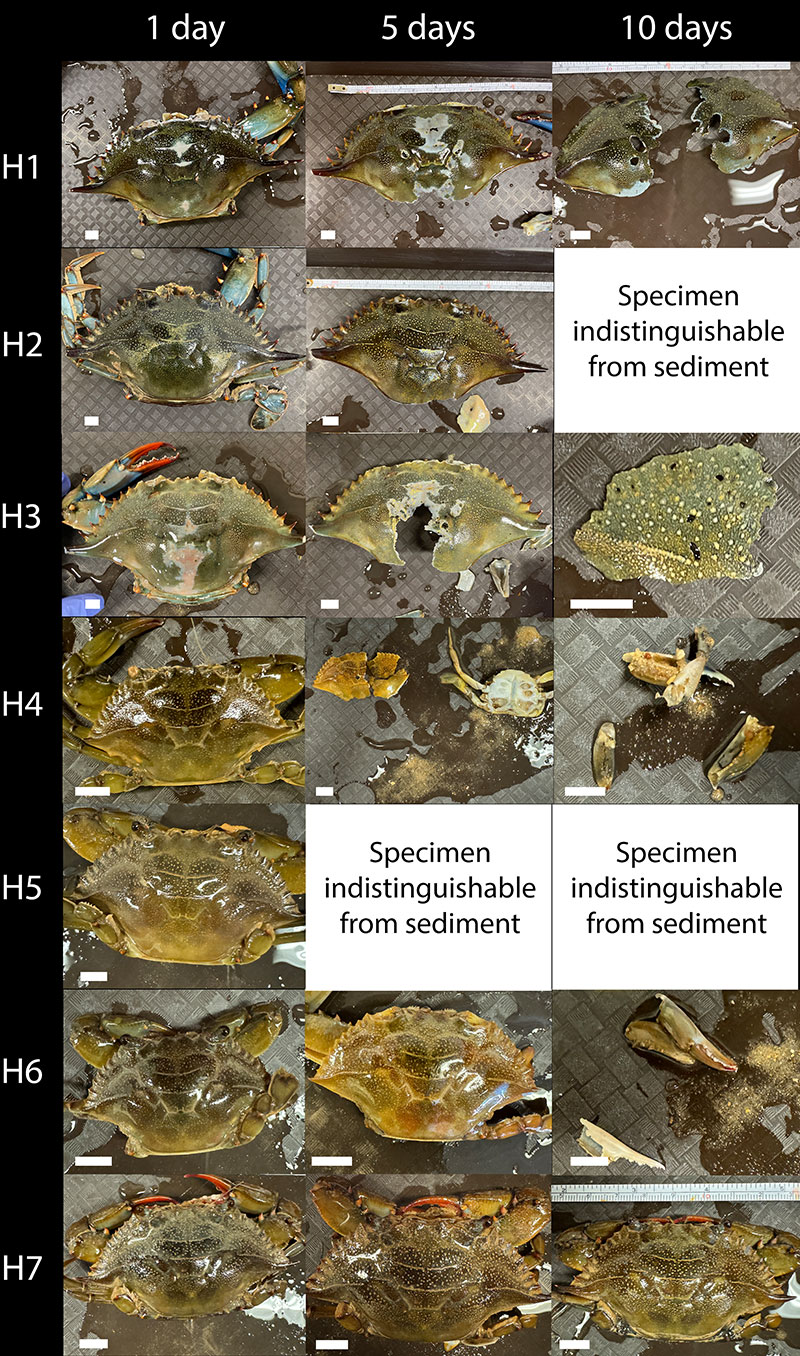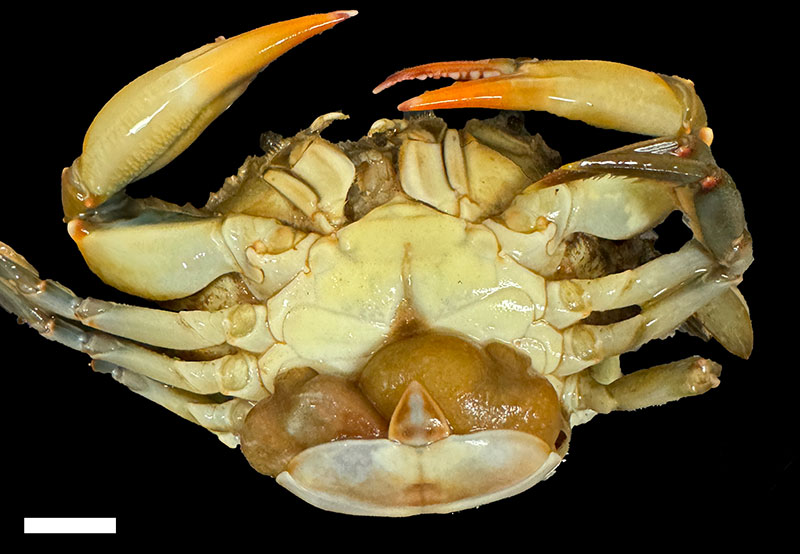FIGURE 1. Calappa flammea (Herbst, 1794) from the Gulf of Mexico shelf with red arrow indicating visible externa of a parasitic rhizocephalan barnacle in the family Sacculinidae. Specimen stored in the collections of the Florida FWC Fish and Wildlife Research Institute in St. Petersburg, Florida, United States of America (Cat. no. FSBC I 138881 and 138882). Scale bar is 5cm.

FIGURE 2. Taphonomic scores through time for each tumbling trial, as well as for the combined averages of trials including and excluding larger parasite-free specimens. Parasitized individuals are represented by yellow lines, parasite-free individuals are represented by blue lines. P-values and the V statistic from per-trial and combined paired Mann-Whitney tests are given.

FIGURE 3. Callinectes sapidus (Rathbun, 1896)specimens with rhizocephalan parasites after one, five, and ten consecutive days of tumbling. Scale bars are 1cm.

FIGURE 4. Callinectes sapidus (Rathbun, 1896) specimens without rhizocephalan parasites after one, five, and ten consecutive days of tumbling. Scale bars are 1cm.

FIGURE 5. Specimen P7, shown with two rhizocephalan barnacle externae present. Scale bar is 1cm.


